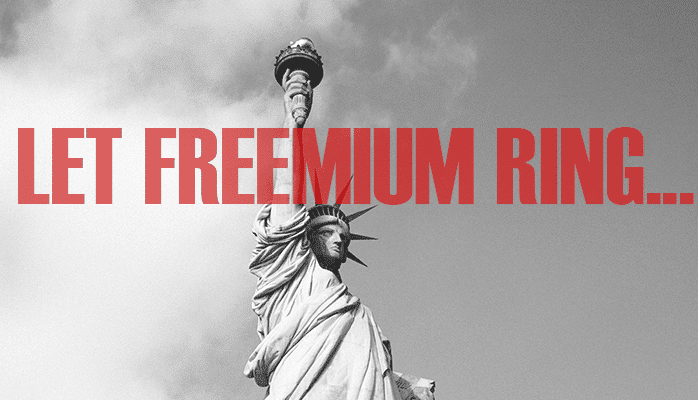And obviously I am not alone. Freemium is taking over the digital games space, with games like Clash of Clans and Game of War and taking in millions, and taking over every advertising space on the Internet!
Beyond games, Freemium has become a go-to digital business model. Customers are given basic functionality for free, with better and more attractive functionality coming at a price, often subscription based. Freemium is now the dominant and most profitable business model for mobile apps and is used all over the digital economy from Hulu to Dropbox.
Freemium is an attractive digital business model because:
- Free items are easy to market, cutting down on the need for expensive campaigns or sales teams.
- Incentivized friend referrals build up a user bases cheaply
- Subscription fees (which most freemium models utilize) have proven to be more reliable than advertising revenue.
- Freemium has also proven to be more successful than free 30-day trials.
BUT, for all its benefits, the freemium model is not necessarily for everyone. New digital businesses or companies undergoing digital transformation should be cautious; it is not a one size fits all digital model. So, let’s explore some of the intricacies of freemium and gain some understanding of this dominant digital business model!
What’s free and what’s not? Why should they upgrade?
Freemium’s whole point is to attract users cheaply, so the free product or service must be enticing and valuable on its own, but not so valuable that no one wants to upgrade. You will need to test and adapt, but if you rejigger too severely you will risk a user exodus as they suddenly have to pay for recently free items. Optimal orientation takes time, trial and error and extremely delicate maneuvering.
A successful freemium model must also clearly articulate why your users should upgrade. This task is difficult because you must simultaneously articulate the great value the free product is offering, the two value propositions must hit home at the same time. Yale School of Management Professor Vineet Kumar offers a case study demonstrating this hurtle,
“Dropbox and LinkedIn are a study in contrasts. The former has attracted 200 million users with a simple proposition: Everyone who enters a username and a password gets two gigabytes of cloud-based storage free. If people run out of space, they can pay $9.99 a month (or, alternatively, $99 a year) for 100 GB of storage. The free version is adequate for basic documents, but anyone who wants to back up photos or other media quickly hits the limit, and the reasons to upgrade are obvious.
For many LinkedIn users, the advantages of upgrading are murkier. I’ve used LinkedIn for several years to keep in touch with colleagues, and I routinely receive e-mails urging me to upgrade—but the ongoing value of doing so is not apparent. (The company offers four premium subscriptions, some aimed at specific customer segments, such as recruiters or salespeople, and most featuring deeper search functionality, better e-mail capability, and more visibility into who has viewed your profile.) Although LinkedIn is successful—it was one of the first freemium companies to go public—it could probably monetize more users if the distinctions between its free and paid offerings were clearer.”
A freemium’s model’s success depends intensely on savvy business strategy plus really skillful marketing, and less so on the product or service itself. You must ensure that your teams are smart, well-coordinated, and communicating. And you MUST have a good handle on your customers’ usage patterns, and translate that usage, or lack thereof, into your product roadmap.
Insuring innovation
Perhaps the largest pitfall for the freemium model is that it cannot sit still for long. A freemium model is dedicated to innovation. Your early user base will be less price sensitive because your products or services are of most value to them; this is your target market. As time goes on, conversion rates will fall as your new users find your products and services of less value to them. This dip in conversion rates can be costly as you continue to provide free services for a growing user base, the cost of servicing your client base can sneak up on you. You must innovate.
To survive freemium’s ebbs and flows you must constantly be increasing the value of your premium product or service, striving to provide value to a larger and larger segment of your free users. This means constant innovation. Again, Dropbox is a great example; once just cloud storage product, it now offers a full range of collaborative features making it a great tool for all sorts of businesses and projects. The innovative new features ensured that more and more people will find value in what Dropbox offers.
The Balancing Act
Making the freemium model work is a business balancing act. It takes suburb market insight and business savvy to be successful and to keep growing. But there is a reason it’s so popular these days, engineer it right and it can be wildly successful. Good luck!
















